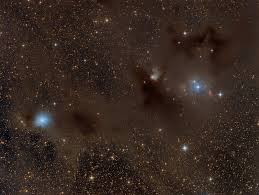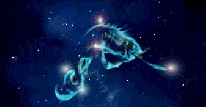
Constellations in the southern and the northern sky resemble many shapes and structures. These shapes make it unique to be recognized and identified in the sky. Hence, if you spot a type of lizard in the sky, it is the constellation Chamaeleon. Created by the Dutch astronomer Petrus Placinus in the 16th century from the observations of Dutch navigators Pieter Dirkszoon Keyser and Frederick de Houtman, it was first depicted in Johann Bayer’s star atlas Uranometria in 1603 and is sometimes also called the Frying Pan in Australia. The constellation is clearly seen in the month of April at 9 pm.
The bright stars in this constellation are not greater than the fourth magnitude. It has several binary stars; the notable ones include:
- α Chamaeleontis or Alpha Chamaeleontis: It is the brightest star of this constellation. Its apparent visual magnitude is about 4.066 and is approximately 63.5 light years distant from the earth.
- β Chamaeleontis or Beta Chamaeleontis: It is the third brightest star in the constellation. A main sequence star, its magnitude varies from 4.24 to 4.30 and is about 270 light years distant from the earth.
- δ1 Chamaeleontis or Delta Chamaeleontis: This is a binary star that consists of two similar stars separated by 0.6”.
- ε Chamaeleontis: The star is similar to Delta Chamaeleontis but the similar stars are separated by 0.9”.
- R Chamaeleontis: It is a Mira–type variable star with a period of 334 days. Its apparent magnitude is about 7.5 to 14.
- CT Chamaeleontis: It is a T Tauri star and is believed to be a brown dwarf. Its apparent magnitude varies between 12.31 and 12.43 and is approximately 540 light years distant from the earth.
- HD 63454: it is a K–type main sequence star with an apparent magnitude of about 9.40. Lying near the south celestial pole, it is 116.7 light years away from the earth and can be seen in a small telescope.
A few notable deep sky objects are:
- Eta Chamaeleontis Cluster: It is an open star cluster centered on the star Eta Chamaeleontis. Also known as Mamajek, it was discovered in 1999 and was the first one to be discovered due to the X–ray emissions from its member stars. It is estimated to be around eight million years old and consists of about 12 relatively young stars. It lies approximately 316 light years away from the earth.
- Chamaeleon cloud complex: It contains numerous molecular clouds located between 400 and 600 light years from the solar system that are forming a low–mass T Tauri type stars.
- NGC 3195: A bright planetary nebula, it lies halfway between the stars Delta and Zeta Chamaeleontis. The southernmost bright nebula known, it is not visible from the northern hemisphere at all. Its magnitude is about 11.6 and is approximately 5,500 light years away from the earth.

Seen at latitudes between 0° and –90°, it lies in the second quadrant of the southern hemisphere.
It occupies an area of 132 square degrees, making it one of the smallest and 79th in size among all the other constellations. The closest star is 63.1 light years distant from the earth and hence, it can be said that Chamaeleon is 270 light years distant from the earth.
There are no myths associated with this constellation as it was created for scientific reasons. Jodocus Hondius, the Dutch cartographer depicted this constellation as a chameleon that was sticking its tongue out to catch a fly. The fly is represented by its neighbouring Musca constellation.

Chamaeleon is surrounded by the constellations like Apus, Carina, Mensa, Musca, Octans and Volans.
G Kowledge of | 0 Comments >>
0 Comments
Leave Comment
Your email address will not be published. Required fields are marked.